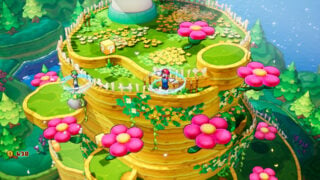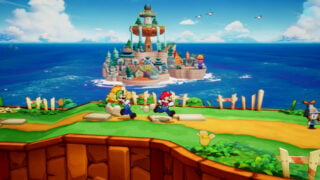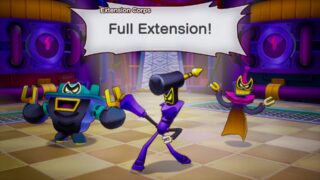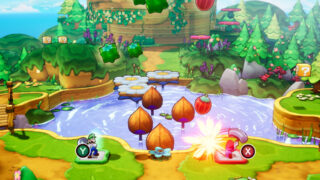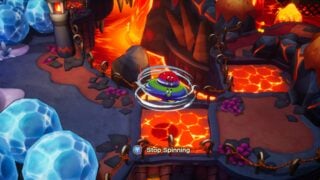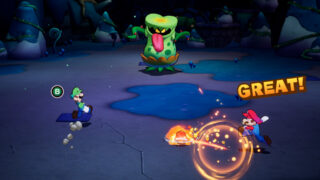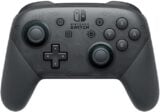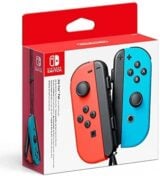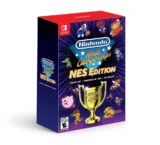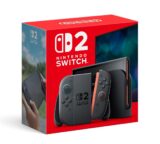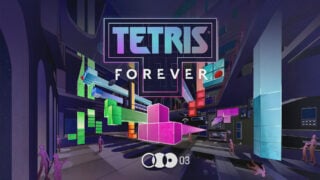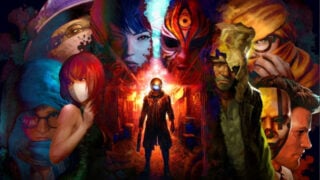Mario & Luigi Brothership review: A triumphant return for Nintendo’s RPG series
Nintendo ends its golden year of Mario RPGs on Switch with a brilliant final flourish
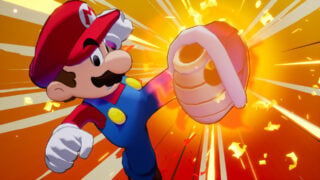
In a year when Nintendo has already released two brilliant turn-based Mario RPG games, it’s an achievement in itself that Mario & Luigi Brothership – unlike the others, a totally original game – is worthy of your attention.
If you were to judge all three as first-time experiences, Brothership doesn’t boast quite as strong characters or scenarios as the all-time classics Super Mario RPG and Paper Mario: The Thousand Year Door, and it’s occasionally let down by some overly obtuse puzzles. But it’s otherwise an exceptionally vibrant, inventive, and spirited adventure, with enough original ideas to stand apart – even if you’ve already ploughed hundreds of hours into Mario RPGs this year.
While Switch’s other two outings were genuine dream-come-true remakes for many fans, the prospect of the first all-new Mario & Luigi instalment in nine years is extra special. And, while Paper Mario games et al haven’t exactly thrived over the past decade, there’s little doubt that this is the best original Mario role-playing release since those classic games.
Like the Game Boy Advance and Nintendo DS titles it shares its DNA with, Brothership is an adventure full of colourful worlds, original characters, funny dialogue, inventive mechanics, and a pair of expressive protagonists, all underpinned by the comfortingly familiar mechanics of a robust turn-based battler.
The Switch entry sees the plumber pair visiting the mysterious land of Concordia, where life is a mix of biological and electric appliance, and the people look like a mix of shrub and plug socket. It’s an inspired art direction – and the game itself is strikingly beautiful – with the creatures shaped like all sorts of familiar electronic appliances, like HDMI and speaker cables. This also makes for some absolute top tier puns (the game’s main NPC, who cares for a giant electricity-producing tree, is described as a ‘Watanist’, who wants you to collect ‘Luminade’).
Mario & Luigi find the land of Concordia in trouble, after it’s been split into dozens of islands, scattered across a vast ocean. The main objective of the story is to reconnect them, whilst also trying to somehow return to the Mushroom Kingdom. The game’s theme of reconnecting communities lays the groundwork for a story about the bonds between brothers and communities, a bit like Death Stranding with Goombas.
The plumbers explore Concordia using Shipshape Island, which is a sort of hub world vessel that can sail around the ocean. Players can decide where to send Shipshape by plotting a course along a map, like a train on a track, and then discover any islands they pass by using a telescope which doubles as a cannon for blasting over to them. It’s a genuinely cool idea and a refreshing foundation for the adventure.
By splitting the game into a series of islands, developer Acquire is able to add a large variety of environments, but also ensure that they feel part of a cohesive world. This also makes for a really satisfying sense of progression, as once connected (with a giant lighthouse with a plug extension cable, of course), each island is literally tethered to Brothership and will follow it around the ocean, like an archipelago armada.
For those who, like us, are on their third Mario RPG series of the last 12 months, the Mario & Luigi games differ in a few distinct ways. Overall, there’s a larger focus on action and platforming compared to the turn-based battling in the Paper Mario games, with players controlling Mario and Luigi simultaneously in often frantic scenarios.
“Overall, there’s a larger focus on action and platforming compared to the turn-based battling in the Paper Mario games, with players controlling Mario and Luigi simultaneously in often frantic scenarios.”
The pair’s actual walking movement is synchronised, but players can independently control their jumps and attacks for some fairly unique platforming gameplay. The pair also have Bros Moves they can use during exploration, which let them, for example, transform into a UFO to traverse large gaps, and Luigi can be instructed to destroy nearby crates of scenery using the L button, which makes for fast coin and item mining.
Ahead of release, Nintendo said it’s made the Mario brothers closer than ever for this entry, and it really feels like it: Brotherships’ animations are wonderfully expressive throughout, with the brothers helping each other to perform acrobatic moves, or hoisting their downed sibling over their shoulder when defeated.
The relationship between the pair also feels more warm-spirited, with Luigi no longer cast as the wimpy sidekick, but the smarter of the brothers, who throughout the game frequently comes up with solutions to puzzles and boss battles with his humorous ‘Luigi Logic’ animations.

Personality goes a long way in this type of game, and as with the Mario & Luigi series’ previous handheld entries, Brothership is a welcomingly wholesome adventure, with fun and irreverent dialogue, and creative plot points. The characters here aren’t quite as memorable as the all-timer casts of TTYD and SMRPG, with an overreliance on similar designs, but overall, we enjoyed exploring their backstories and solving their problems through the huge number of side quests.
Surprisingly, with it taking a bit more of a back seat compared to Mario’s other RPG lineage in terms of raw time played, the turn-based battles proved to be possibly our favourite part of the adventure. Combat is robustly traditional, with Mario & Luigi able to level up and customise their stats, but it’s also consistently fresh thanks to a pleasing amount of interactivity, a large variety of enemies and moves, and a strong Battle Plugs feature.
As with previous entries, Mario & Luigi’s turn-based battles are heavily interactive. The timed button presses of Paper Mario are here, but the dynamism is dialled up. When attacking, players can chain together attacks from both Mario and Luigi, by pressing A and B at the right time, depending on which brother is in view. Well-timed moves can lead to lengthy combos, which can see Mario jumping on a baddie and then Luigi kicking him back up for another go.
“Personality goes a long way in this type of game, and as with the Mario & Luigi series’ previous handheld entries, Brothership is a welcomingly wholesome adventure, with fun and irreverent dialogue, and creative plot points.”
This is even more compelling when defending, as each enemy attacks in a variety of patterns which can each be blocked after you figure it out, such as by jumping at the right time to avoid a charge, or hammering a projectile back at your foe. It’s a satisfying dynamic and means you need to be more engaged with the action compared to more laidback turn-based games.
Bros Attacks also return, which are special moves performed by completing spectacular QTE sequences, such as kicking a shell like a football, with every pass between the brothers resulting in a more powerful attack. But the most significant feature in combat are the aforementioned Battle Plugs, which allow players to activate different bonuses, such as improving certain attacks making counters easier, preventing effects like dizziness, or adding auto healing.
Unlike similar modifiers in the Paper Mario games, Brothership’s Plugs aren’t found, but crafted via the pause menu, using a currency found by exploring the various islands. Crucially, they also expire, at which point you can opt to recharge them, or swap them out. This means that you’re essentially forced to experiment, rather than picking the same favourites, and during the game’s lengthy story we appreciated how this made us consider each encounter, rather than brute forcing through.

When it was first announced, the prospect of another 50-hour Mario RPG admittedly had me feeling rather burnt out. So, Mario & Luigi Brothership’s singular approach came as a real pleasant surprise. The series’ home console debut maintains the spirited character and action-oriented platforming of its predecessors, coupled with fantastic exploration and satisfying battle mechanics. Its campaign has some uneven moments, particularly around backtracking and obtuse puzzles, but overall it’s a triumphant return for the Mario & Luigi series.
So that’s three excellent Mario RPGs in the last twelve months. If you were to pick one to play for the first time, it would be difficult not to point to the other two classic remakes, but Brothership does offer something genuinely different, and the fact that it stands up in such close proximity is a big compliment.
Mario & Luigi Brothership review
Mario & Luigi Brothership is a triumphant return for the series, maintaining the spirit and action-oriented platforming of its predecessors, coupled with fantastic exploration and satisfying battle mechanics.
- Satisfying turn-based battles
- Wonderful environments and exploration mechanic
- Fun dialogue and vibrant animation
- Would've benefited from more memorable characters
- Some overly obtuse puzzles
